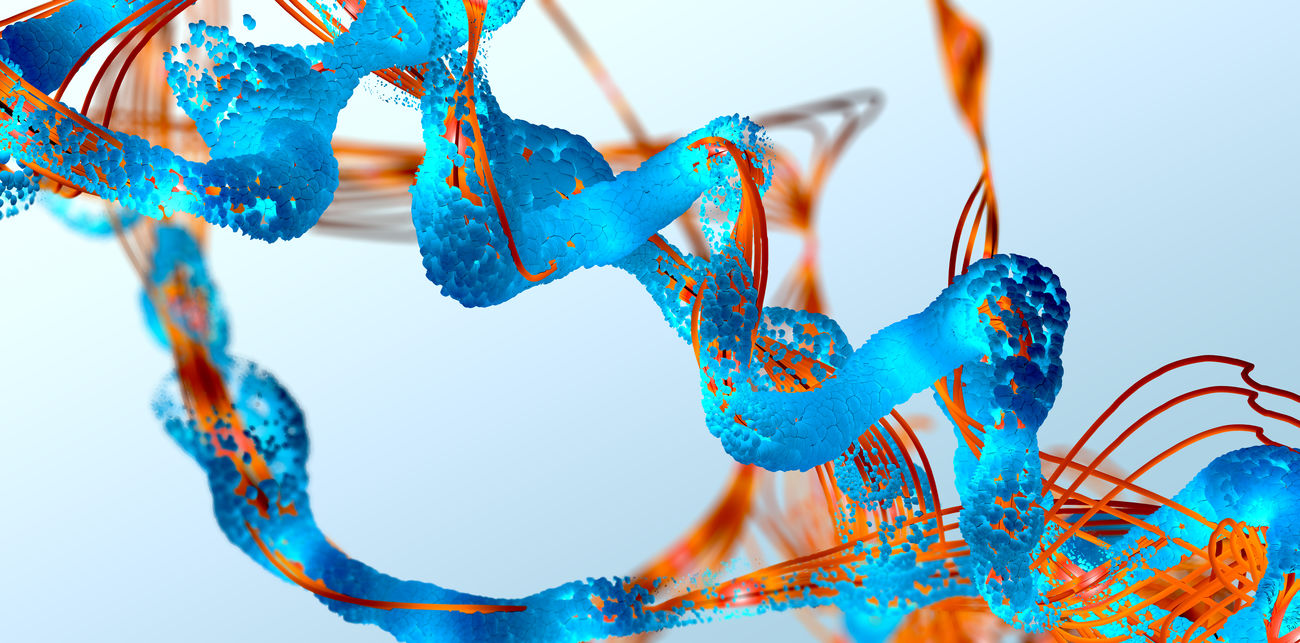Peptides – worth more than gold!


Peptides are chains of amino acids (at least two). The acid monomers are connected through peptide linkages and are amongst the most effective known bioactive substances. Examples of such biologically active peptides are hormones, neurotransmitters, or growth factors. The biggest peptide includes up to 100 amino acids. More than 7’000 naturally occurring peptides are known. Longer peptides with three-dimensional shape are called proteins. Peptide synthesis is a chemical process, in contrast to biological substances like antibodies.
Peptides are mainly used as active ingredients in drug substances. They are regarded as relatively safe, effective, and well tolerated and therefore play an important role in the therapeutic drug market in areas of metabolic disorders, oncology, cardiovascular, neurology or gastroenterology, which have all increased over the past decade.
The peptide therapeutics market is expected to grow 7% CAGR until 2025 to USD 44bn (source: PolyPeptide), driven by an increased number of peptide therapies and patient population growth. There are 76 FDA approved peptide-based therapeutics and over 500 in development.
The two main Contract Development and Manufacturing organisations (CDMO) in the peptide market are Bachem with a share of 25% and PolyPeptide with 20%. Both companies have small concentration risks as the top 10 customers account for roughly 50% of sales. The addressable market is expected to grow 10% CAGR over the next five years from USD 1.5bn in 2021 to USD 2.3bn by 2026. In-house manufacturing by Pharma and Biotech companies accounts for 1/3 of the market and the remaining 2/3 (or the USD 1.5bn) is outsourced to CDMO’s.
The graph below shows the expected active pharmaceutical ingredients (API) drug market development from 2020 to 2027. In 2020, the API market for both innovative and generic drugs had a size of USD 86.6bn.
The key message here is that the peptide API market only accounts for 1.7% of the total API drug market covering all drug segments, thus the peptide class is an absolute niche with a limited number of CDMO players who want and can focus on this segment.
Bachem added oligonucleotides to the agenda in 2018 with the goal of becoming a meaningful player with a full set-up ready for commercial-scale production as of 2021. That goal was successfully reached. The oligonucleotides API market is expected to grow from USD 230m in 2020 to USD 730m in 2025, as such CAGR of 25%. Other sources even expect the market to reach USD 1.4bn by 2025, thus reaching a similar size to peptides today. Barriers to entry are high with substantial capex requirements and complex chemical synthesis but there are lots of synergies in the production of peptides and oligonucleotides.
Bachem’s focus is on siRNA and ASO oligonucleotides, the two most promising sub-segments according to the company. There are about 600 projects today in this category, with the potential likened to the peptide segment. PolyPeptide has also expanded its product offering into oligonucleotides, as well as personalised medicine in the form of neoantigen therapies. PolyPeptide estimates that the oligonucleotide therapeutics market had a size of USD 4.4bn in 2020 and expects a CAGR 29% growth to USD 15.7bn by 2025.
La presente publicación ha sido elaborada por Mirabaud. No está destinada a ser distribuida, divulgada, publicada o utilizada en ninguna jurisdicción en la que dicha distribución, divulgación, publicación o uso esté prohibido. No está dirigida a personas o entidades a las que resulte ilegal enviar dicha publicación.
Leer más
Continuar con